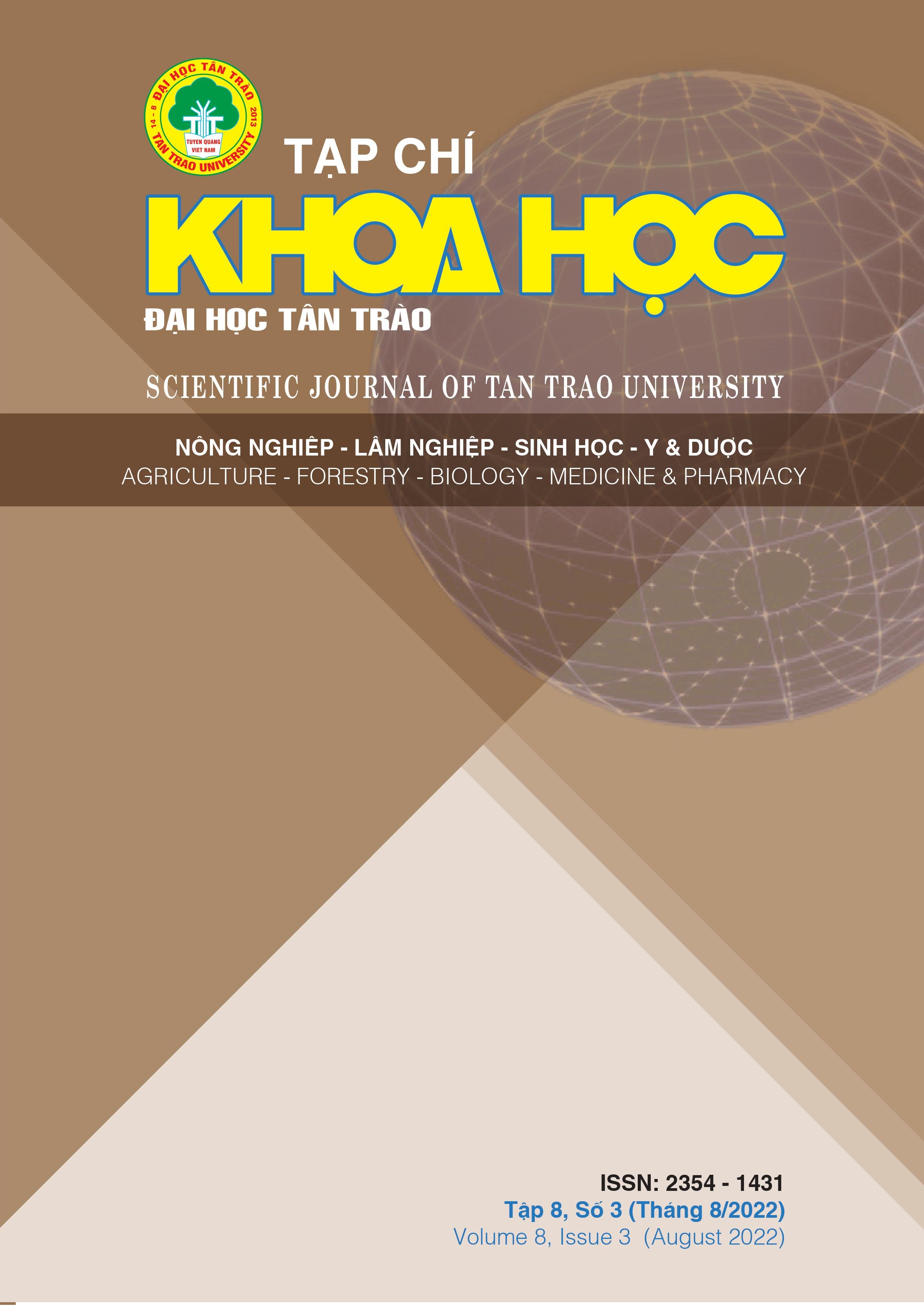THE STATUS OF EXPLOITATION OF PSEUDAPOCRYPTES ELONGATUS IN COASTAL AREAS OF CA MAU PROVINCE
DOI:
https://doi.org/10.51453/2354-1431/2022/796Keywords:
Ca Mau, Juveniles, Pseudapocryptes elongatus, Status of exploitationAbstract
A study on the status of exploitation of Pseudapocryptes elongatus juveniles was carried out in the coastal areas of Ca Mau province from October 2021 to April 2022. Data were collected by interviewing 43 fishermen households to exploit the P. elongatus juvenile. Fishing gear used for catching the P. elongatus juvenile is a bag net with a length of 7.2±2.2 m and a width of 4.8±1.5 m. The result showed that P. elongatus of fish larvae was exploited from April to January next year, but the most exploited from May to July has the highest yield. P. elongatus with small sizes from 1 mm to 1.2 mm appear mainly from May to July, which is the beginning of the spawning season of goby, so the fish size is still small and also the months that account for the highest yield of the year. Large fish from 1.3 mm to 2 mm, and appear from May to January next year but mainly from September to December. The months without fishing households are February and March.
Downloads
References
[1]. Duong Nhut Long, Hua Thai Nhan, Nguyen Anh Tuan (2005). Experimental culture of goby (Pseudapocryptes lanceolatus bloch, 1801) in Ba Tri, Binh Dai and Thanh Phu districts, Ben Tre province, Scientific Journal of Can Tho University, 4 pages.
[2]. Huynh Thao Tran (2010). Study on biological characteristics of goby fish. Master's thesis in Aquaculture, Faculty of Fisheries, Can Tho University.
[3]. Nguyen Huu Phung, Nguyen Nhat Thi, Dinh N.P., Nhung D.T.N. (1997). List of marine fish species in Vietnam. Book 4, Science and Technology Publishing House, Hanoi, 424 pages.
[4]. Rainboth, W.J. (1996). FAO species identification field guide for fishery purposes, Fishes of the Cambodian Mekong, Rome, FAO, 265 p.
[5]. Tran Dac Dinh and Vo Thanh Toan (2011). Season and migratory size of goby (Pseudapocryptes elongatus) in pond conditions, Proceedings of the 4th Fisheries Science Conference, Agriculture Publishing House, Ho Chi Minh city.
[6]. Truong Hoang Minh, Truong Quoc Phu, Wenresti G. Gallardo (2010). Distribution and exploitation of goby fry (Pseudapocryptes elongatus) in the coastal areas of Soc Trang and Bac Lieu provinces, Scientific Journal of Can Tho University, Pages 71-80.
[7]. Vo Thanh Toan and Tran Dac Dinh (2005). Some preliminary studies on the resources of small scale goby (Pseudapocryptes elongatus Cuvier, 1816) distributed in the coastal area of Bac Lieu province. Anthology of Mekong River Fisheries, Agriculture Publishing House, pp. 217-225.
[8]. Vo Van Quang, Tran Thi Le Van, Tran Cong Thinh (2011). Occurrence season and distribution of goby seed (Pseudapocrypte elongatus) in the coastal area of Tra Vinh. The 4th National Scientific Conference on Ecology and Biological Resources, Hanoi on October 21, 2011, Institute of Ecology and Biological Resources, pp. 1265 -1268.
Downloads
Published
How to Cite
Issue
Section
License

This work is licensed under a Creative Commons Attribution-ShareAlike 4.0 International License.
All articles published in SJTTU are licensed under a Creative Commons Attribution-ShareAlike 4.0 International (CC BY-SA) license. This means anyone is free to copy, transform, or redistribute articles for any lawful purpose in any medium, provided they give appropriate attribution to the original author(s) and SJTTU, link to the license, indicate if changes were made, and redistribute any derivative work under the same license.
Copyright on articles is retained by the respective author(s), without restrictions. A non-exclusive license is granted to SJTTU to publish the article and identify itself as its original publisher, along with the commercial right to include the article in a hardcopy issue for sale to libraries and individuals.
Although the conditions of the CC BY-SA license don't apply to authors (as the copyright holder of your article, you have no restrictions on your rights), by submitting to SJTTU, authors recognize the rights of readers, and must grant any third party the right to use their article to the extent provided by the license.


